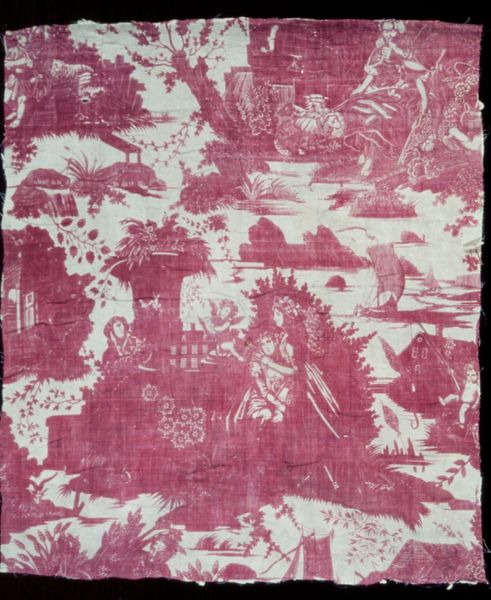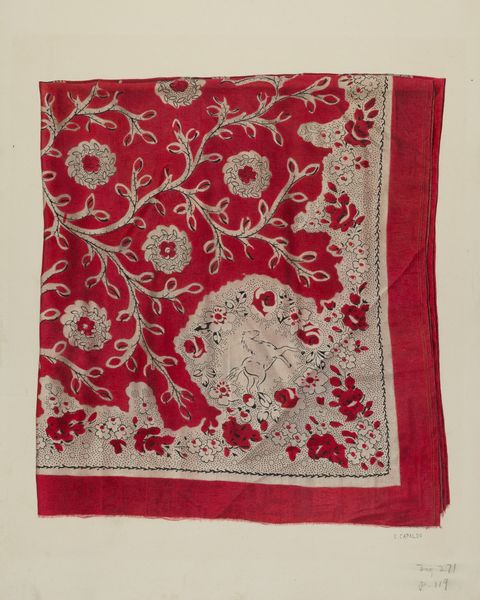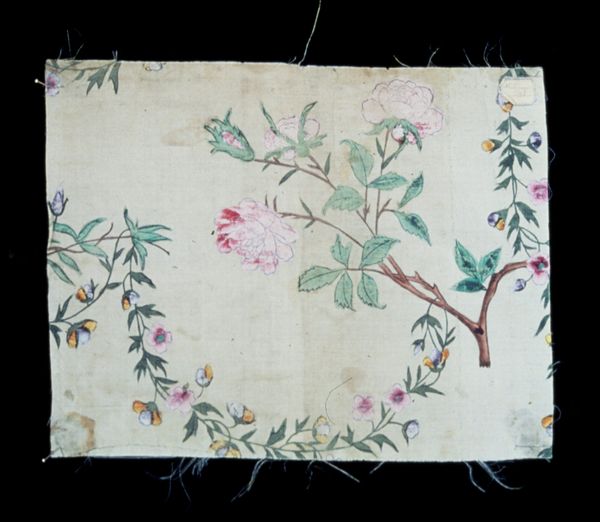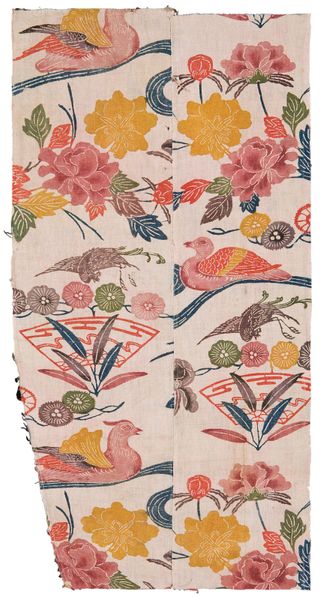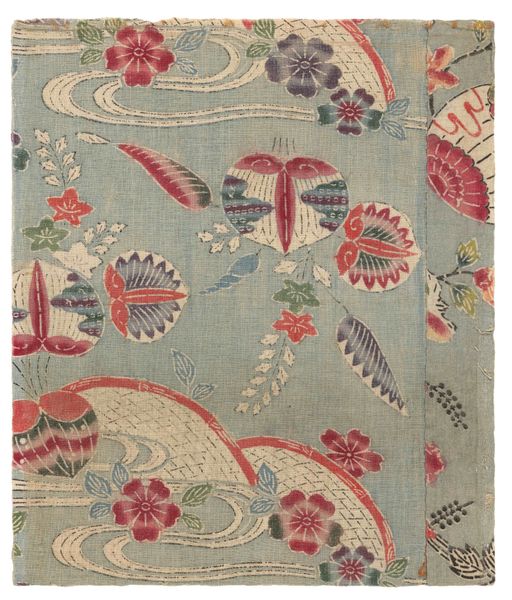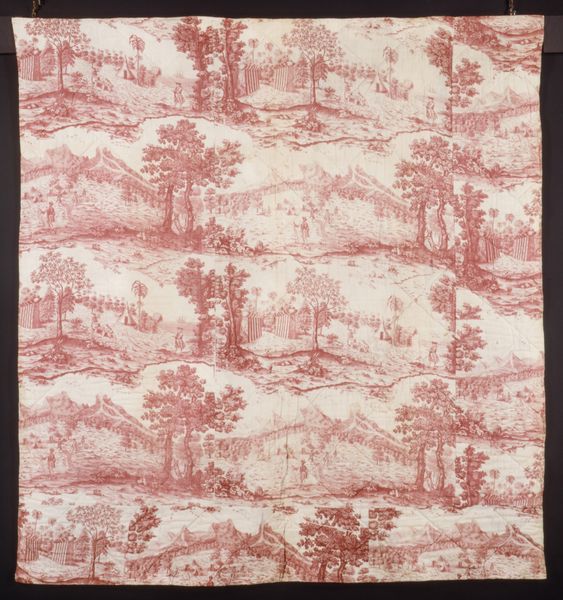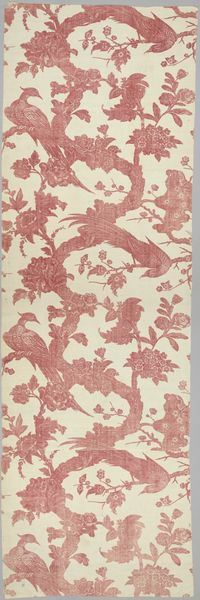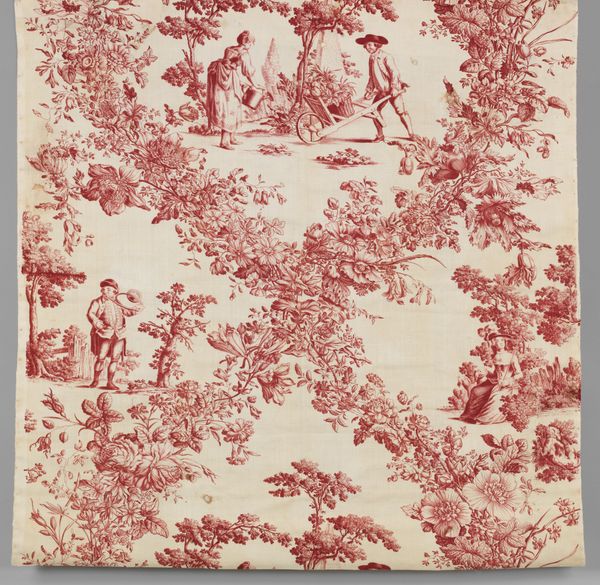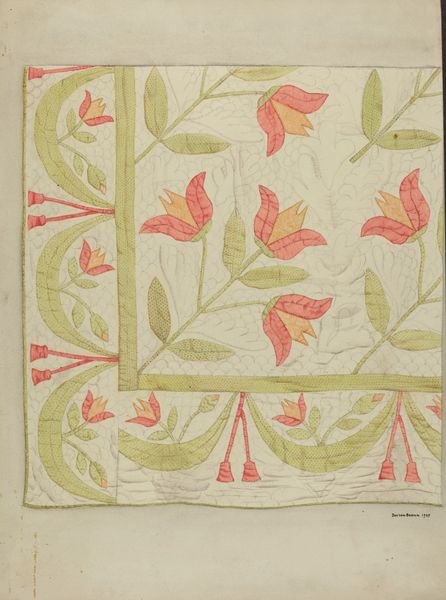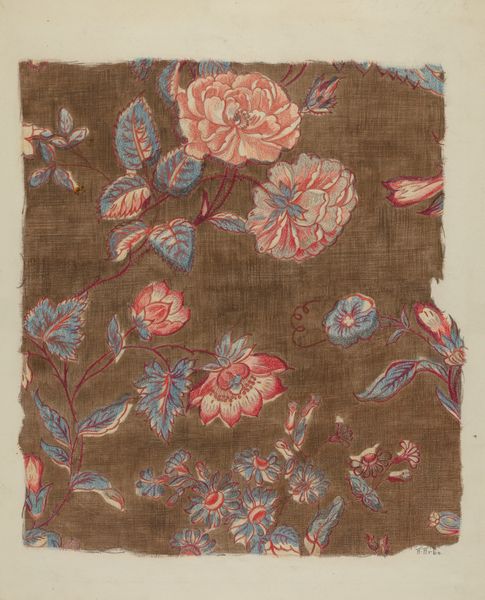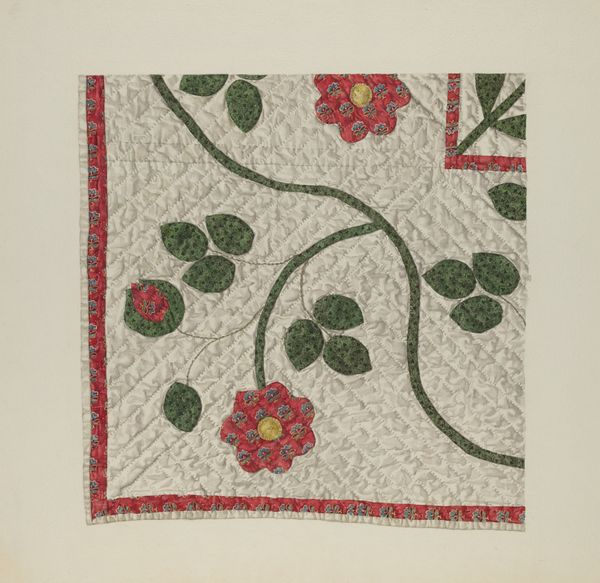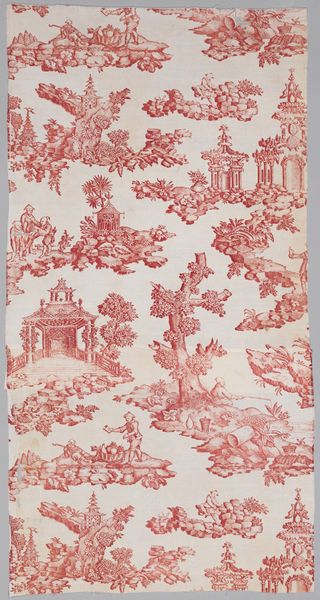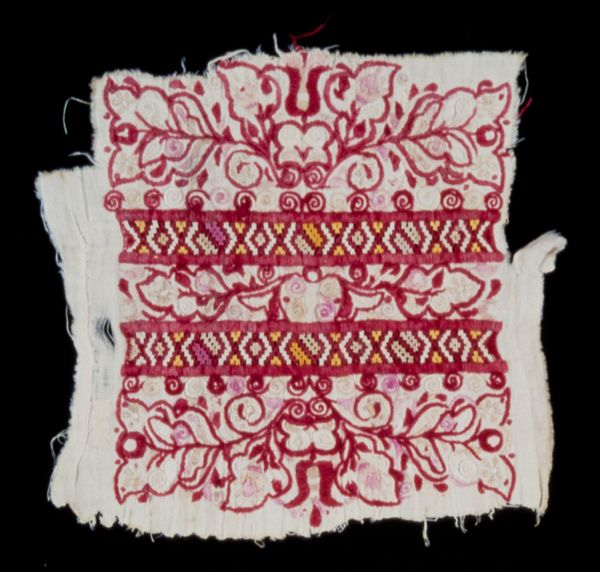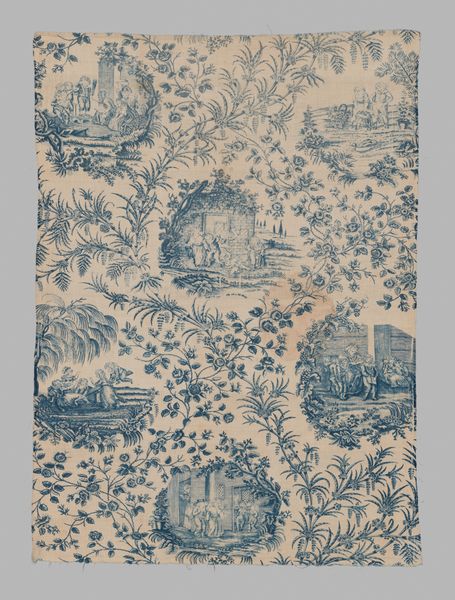
fibre-art, print, weaving, textile
#
fibre-art
# print
#
weaving
#
landscape
#
textile
#
decorative-art
Dimensions: 12 5/8 x 13 1/2in. (32.1 x 34.3cm)
Copyright: Public Domain
Editor: Here we have "Toile Fragment" from around 1800, currently housed at the Minneapolis Institute of Art. It's a printed textile, featuring a pastoral scene in a striking red hue. The material looks almost fragile. What catches your eye most about the composition? Curator: The dominance of line is quite striking. Notice how the scene is rendered almost entirely through linear elements, creating depth and texture? Observe how the weaver explores various linear densities and orientations to define form and volume: the densely packed lines giving a three-dimensional suggestion within the monochromatic medium. Consider how the formal arrangement contributes to an interesting dynamic; it’s a study of positive and negative space using strictly controlled variables. Editor: It's almost like a very detailed drawing. The red and white are starkly contrasted. Do you think that limits the feel of the scene? Curator: Not at all. On the contrary, the limitation becomes the artwork's strength. By adhering to such restricted formal properties, the artist has fully examined the interplay between them and, in so doing, revealed a hidden potential of simplicity. It calls to question what "colour" truly means in art when it does not involve diverse pigment. What are your thoughts about the fragment itself? Editor: It seems a bit incomplete to me, like we are only seeing a snapshot. It feels as though this fragment wants to be something greater than itself. Curator: Precisely. This very incompletion prompts introspection. It’s about exploring the relationship between part and whole, finite and infinite within art itself. Editor: I didn't think about it that way at all. I was too busy seeing what was not here. I'll have to rethink my approach to the incompleteness I find in artwork moving forward. Curator: Indeed, reframing is crucial. The piece succeeds through its rigorous formal constraint.
Comments
No comments
Be the first to comment and join the conversation on the ultimate creative platform.
